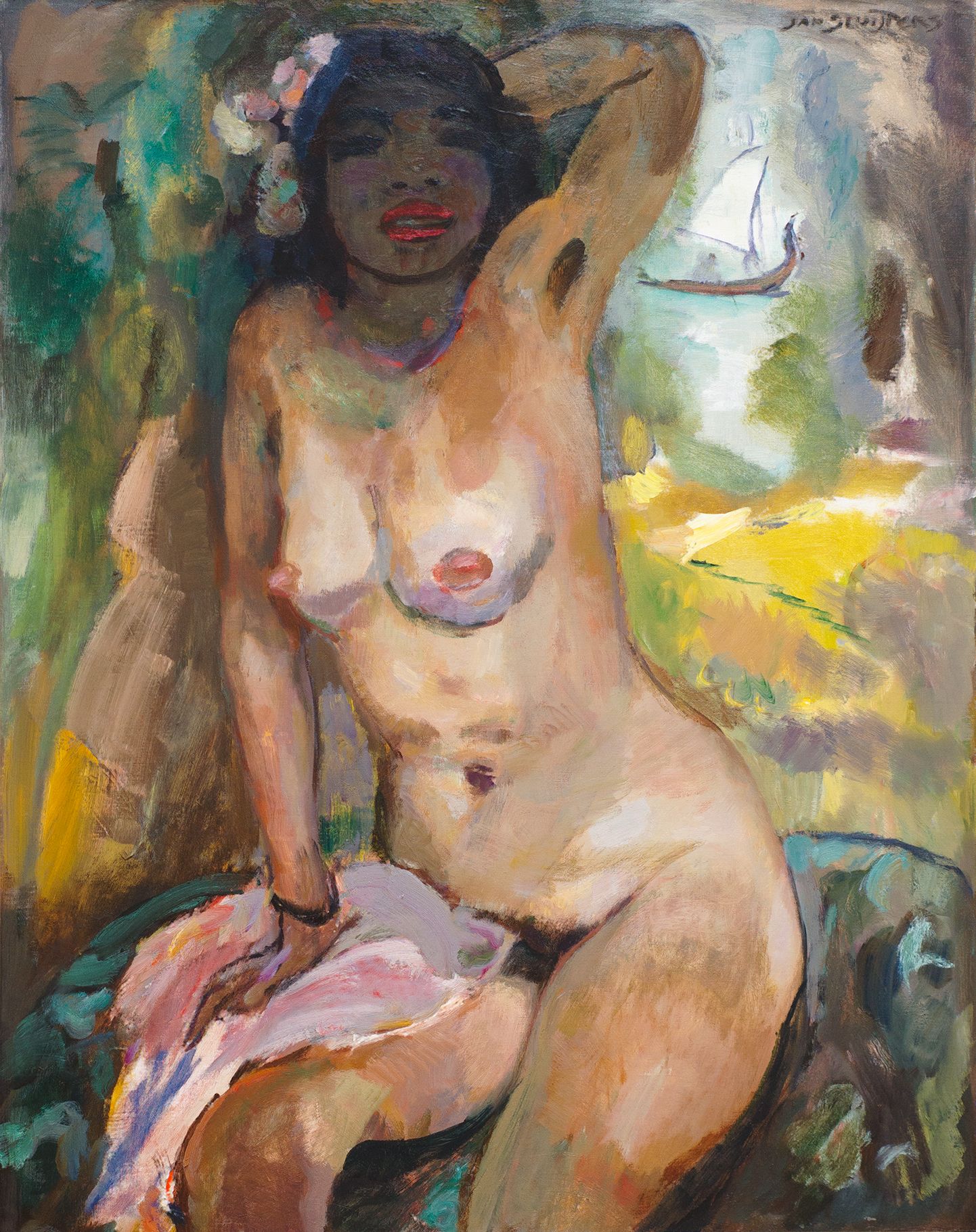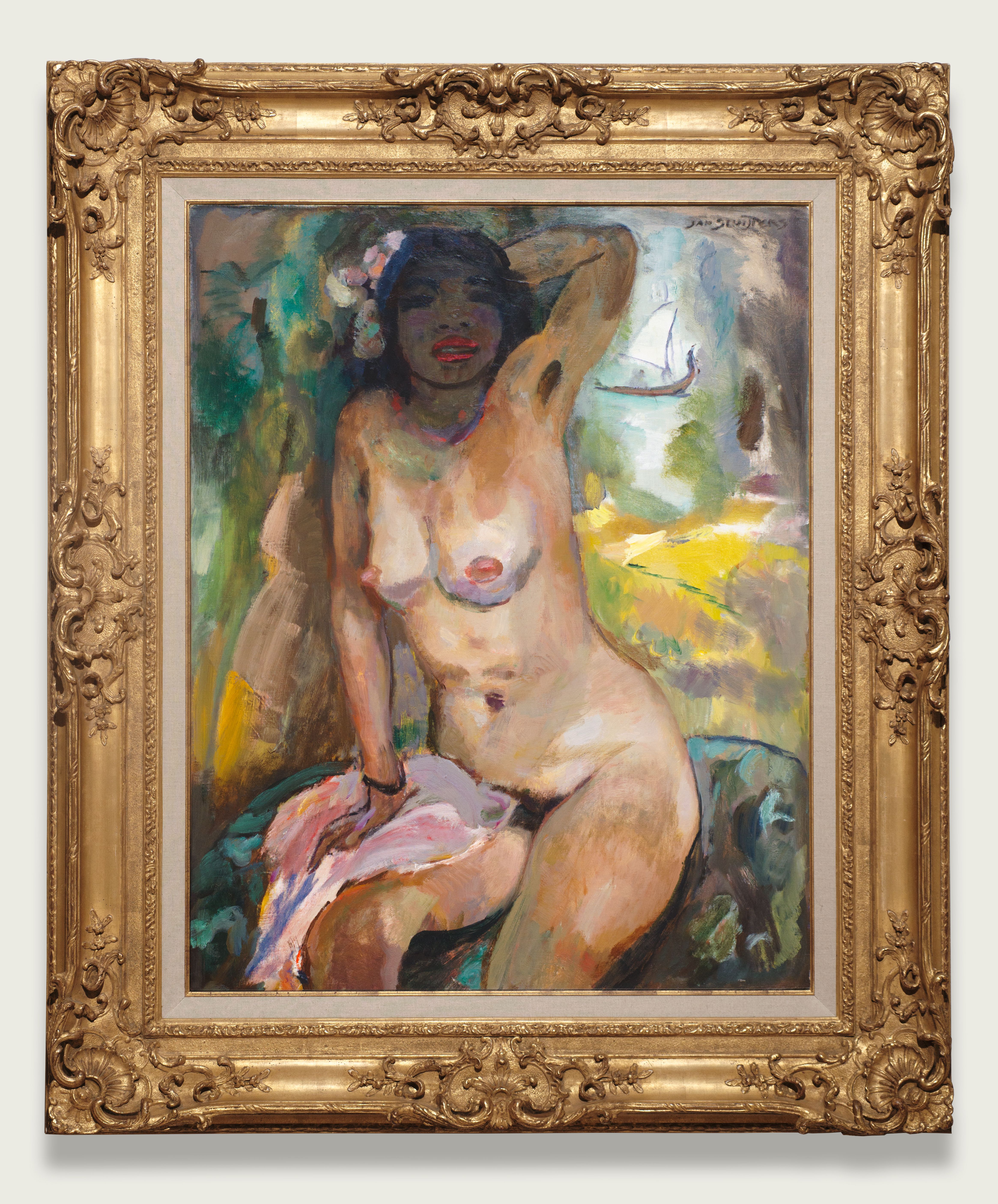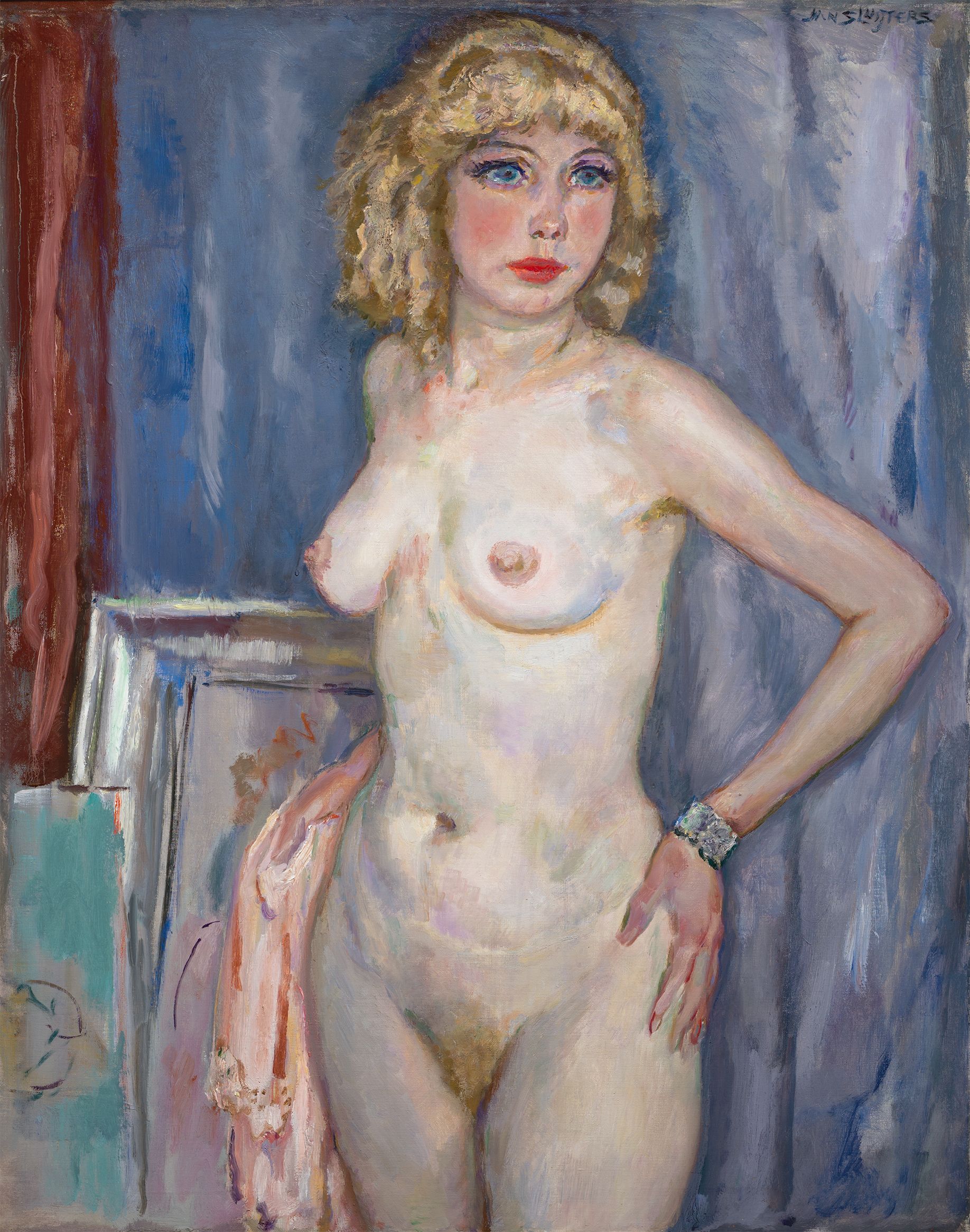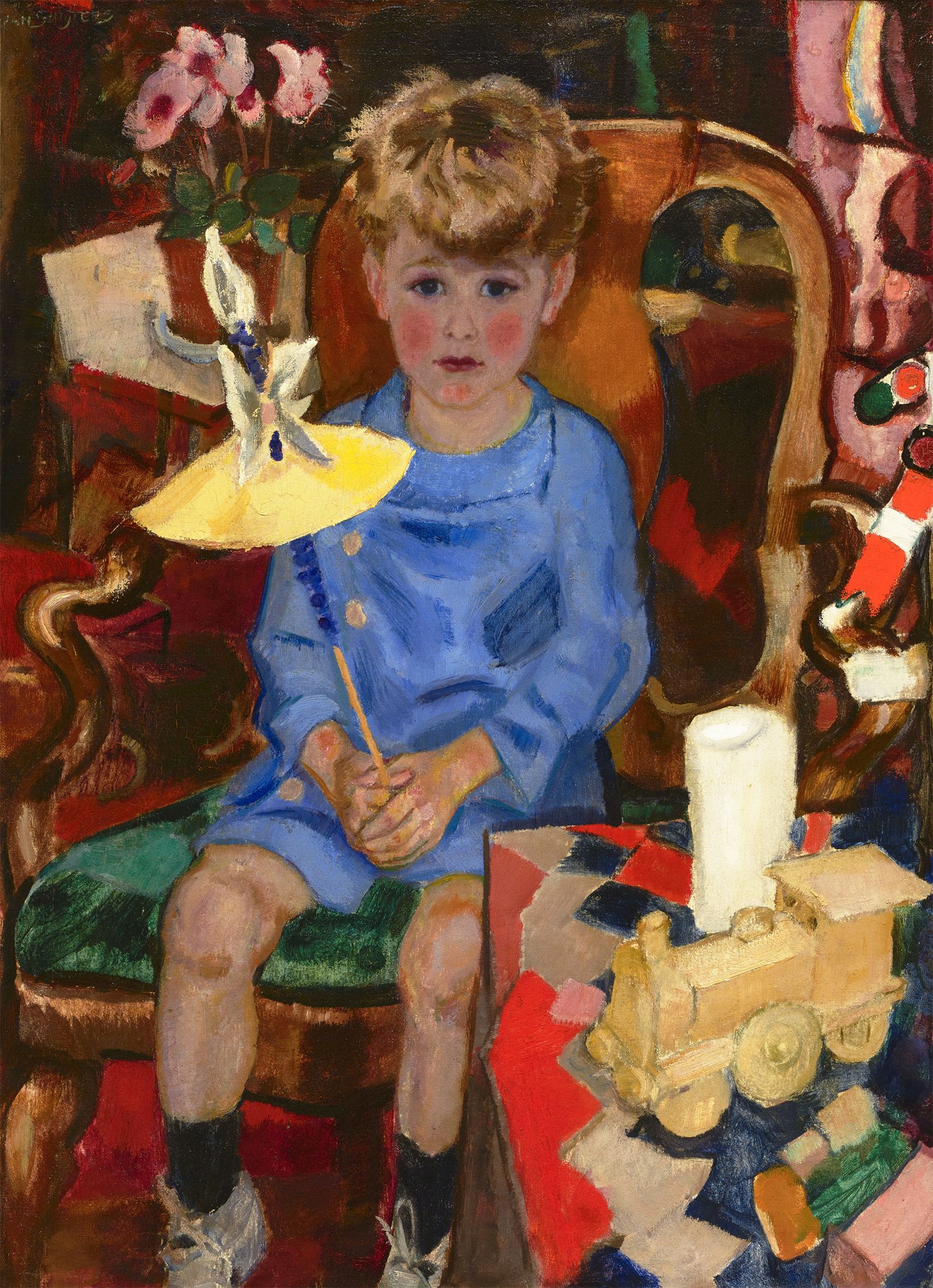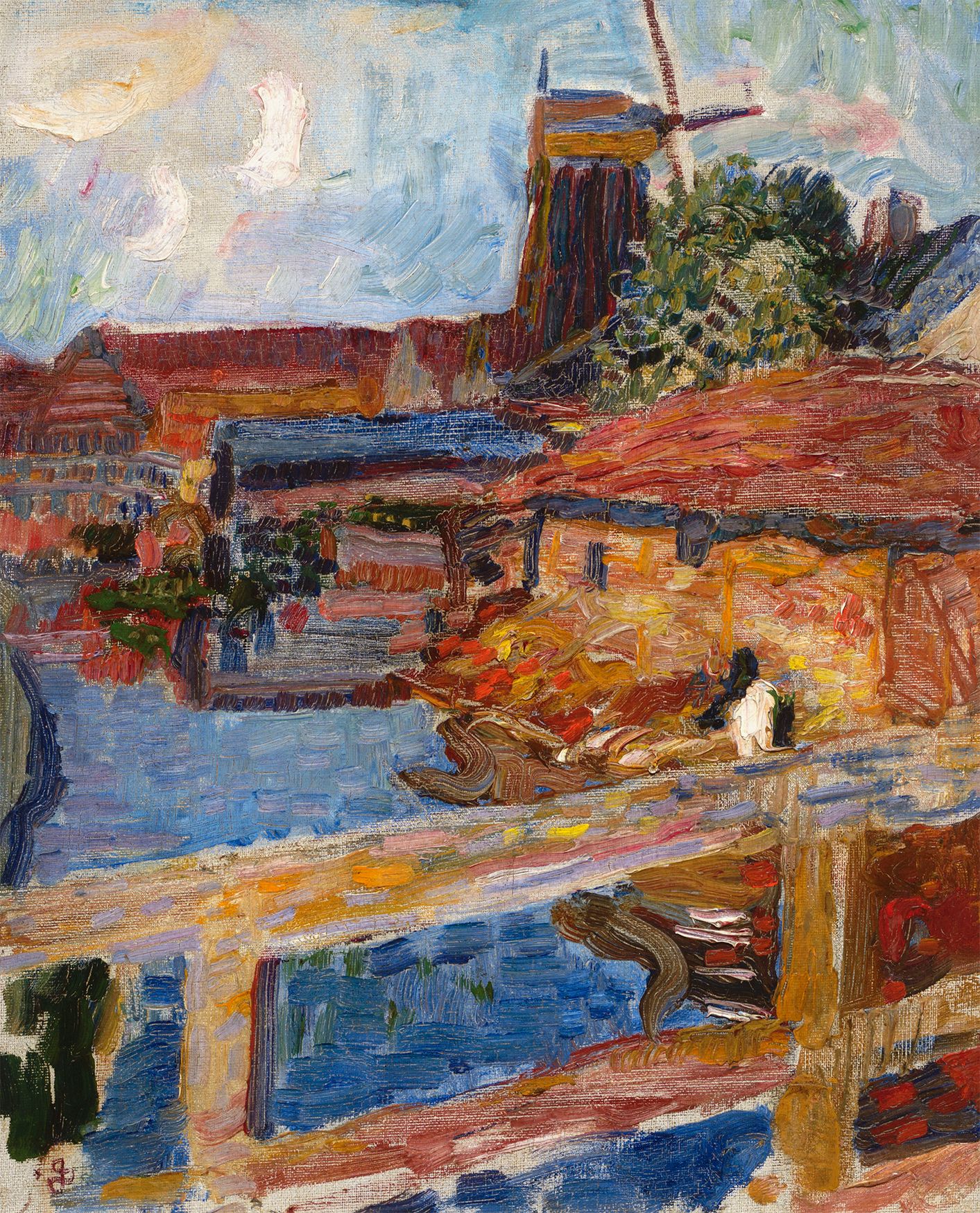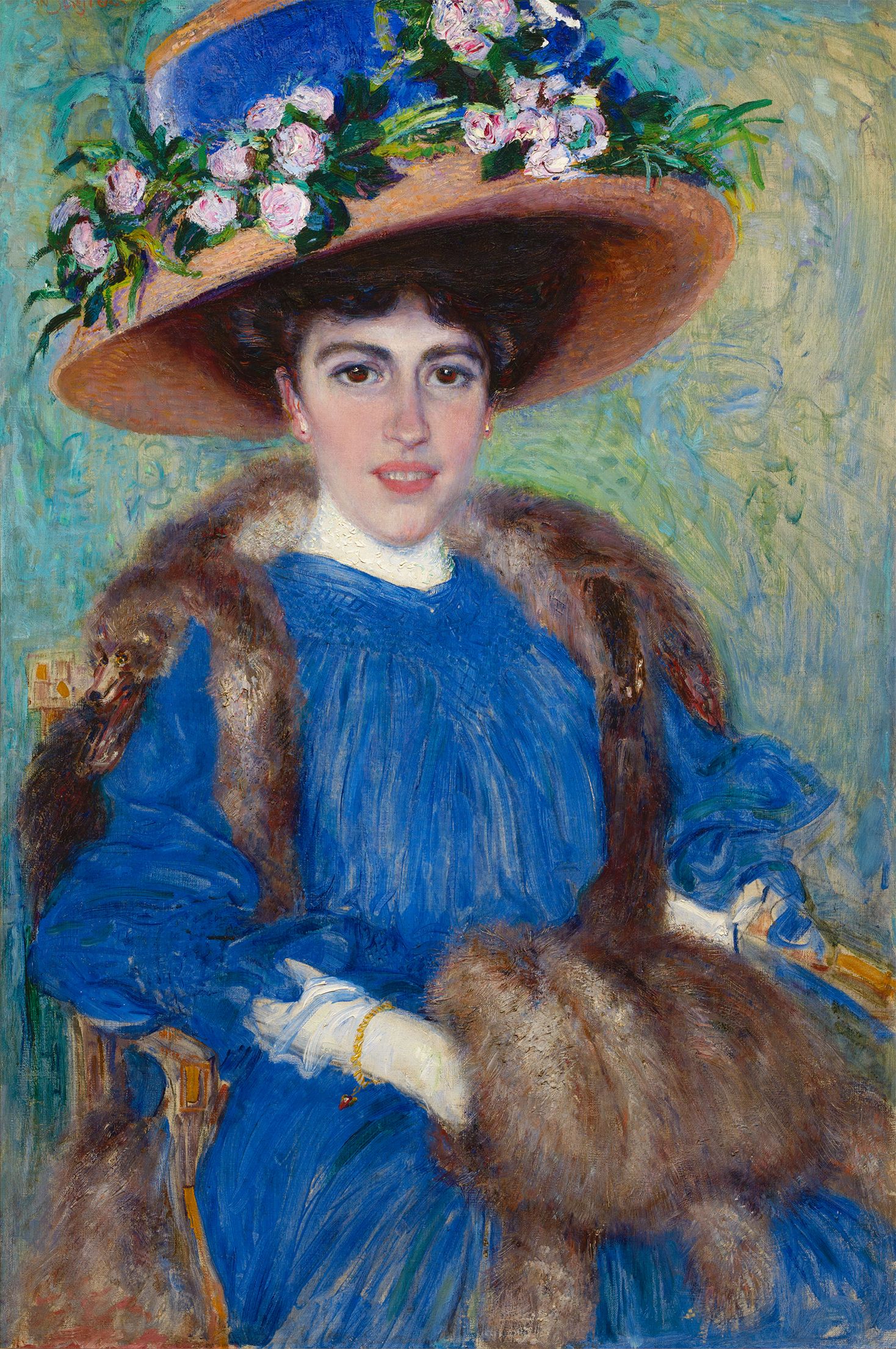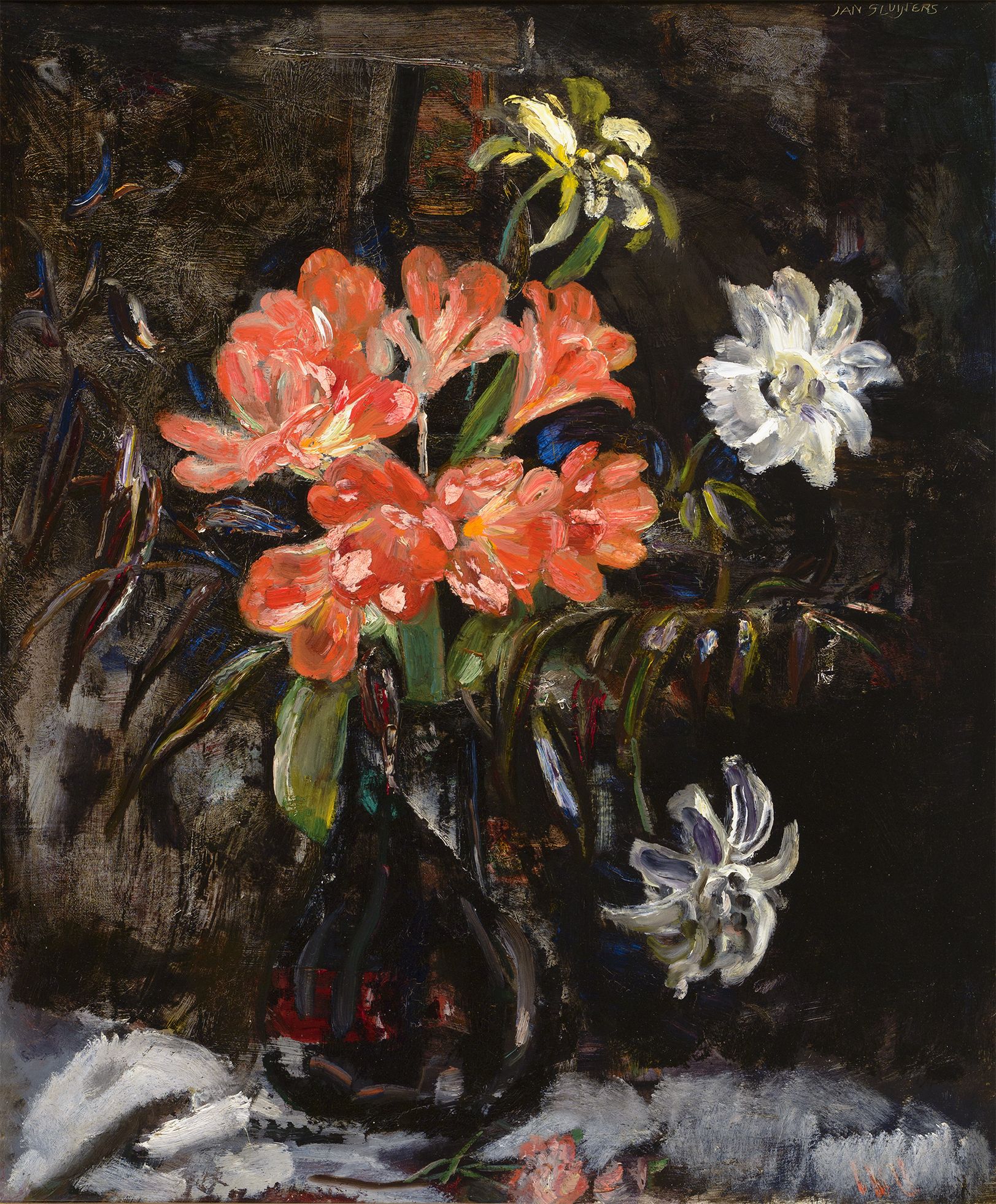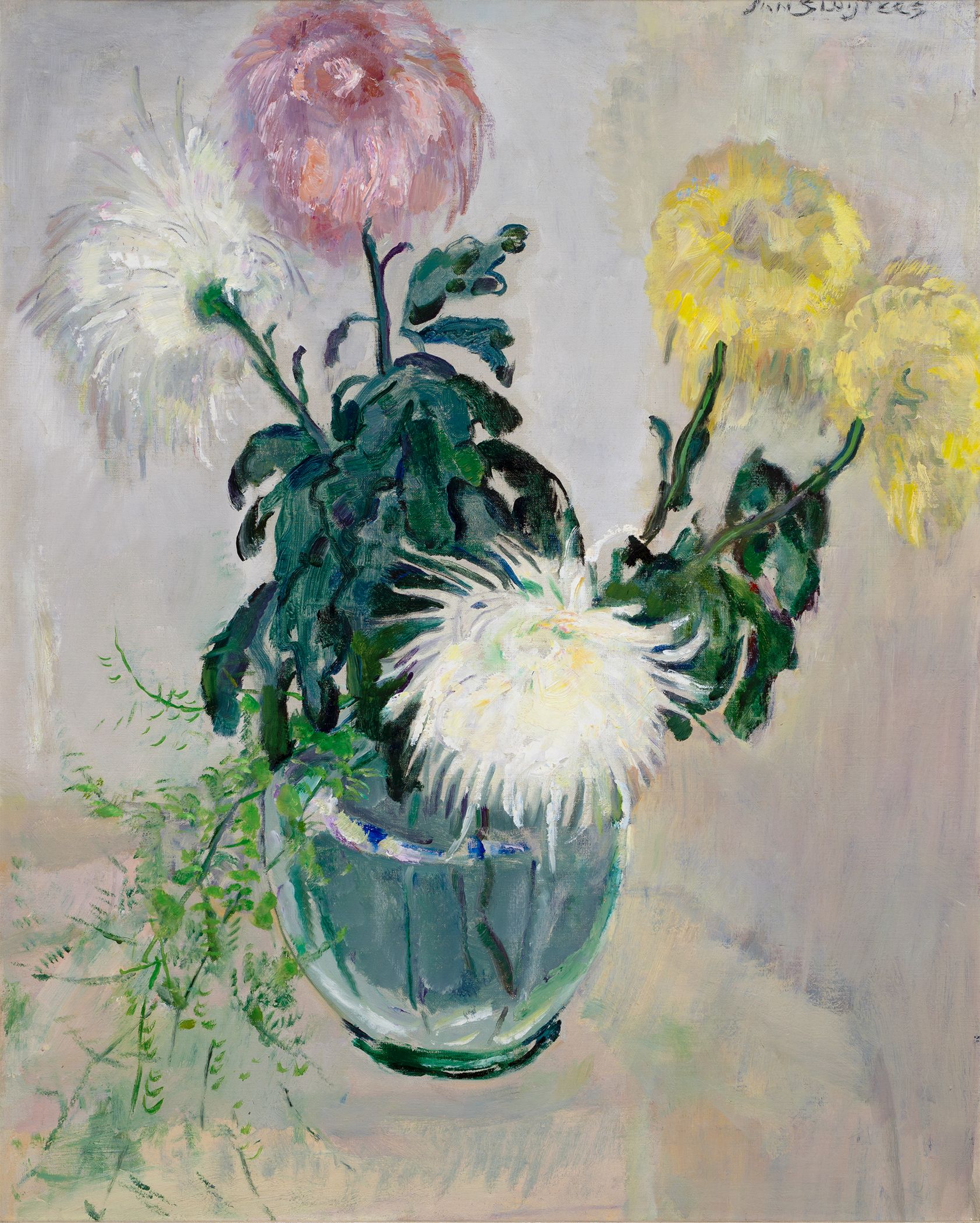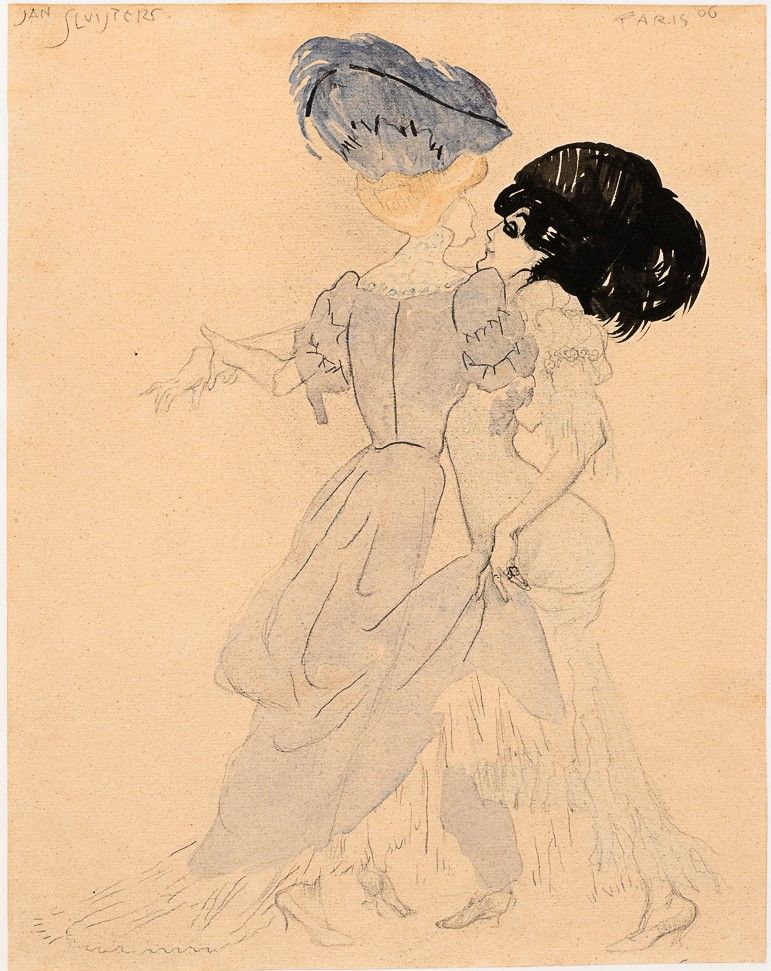J.C.B. (JAN) SLUIJTERS 1881 Bois-le-Duc - 1957 Amsterdam Polynesian Nude
Oil / Canvas: 106 x 84 cm
- This artwork can be viewed in our gallery
- Call us for more information: +31 26 361 1876
- World wide shipping available
Details
In his lengthy career, Jan Sluijters painted numerous subjects: landscapes, still lives, flower arrangements and portraits. With the public he particularly became known as a painter of women. He especially garnered fame, and was criticized initially, for his nudes. He loved to depict dark-skinned women. This Polynesian beauty is one such an exotic model. The half-open mouth with bright red, full lips, the raised arm and the hand disappearing behind her head give the work an explicitly sensual charge. Her skin is painted with numerous nuances of colour. The unprecedented painting handling displays the mastery of Jan Sluijters’ work. The appeal of the painting is also in the exotic subject, which is reminiscent of Paul Gauguin’s Tahitian nudes.
Width: 84 cm
Singer Museum, on permanent loan from Jan Sluijters Jr., Laren, 1967 - 1982
Private collection The Netherlands, since 1982
100 Jaar Later. 1881-1981, Gemeentemuseum De Wieger, Deurne, 1981
Over J.C.B. (JAN) SLUIJTERS
Jan Sluijters is among the most important Dutch painters of the first half of the 20th century. In 1904, he won the Prix de Rome. Sluijters became familiar with modern French painting in Paris in 1906/1907 and had a decisive influence on his work. Here he came into contact with new movements in art such as Fauvism (Matisse, De Vlaminck, Roualt, Van Dongen) and Luminism (Seurat, Signac). In the years 1906 - 1916 he earned recognition as one of the great innovators of Dutch painting. In the period when Sluijters was one of the most important representatives of Dutch luminism, especially in the years 1907-1911, the subject of woods, trees, avenues and country roads regularly recurred in his work; more than 15 times - as far as is known - this theme was treated by him either separately or combined. The forest scenes from 1907 and 1908 remind us of the compositions and use of color of Vincent van Gogh (1853-1890). The topography, perspective and accurate rendering of trees and foliage dominate the compositions from these years. Due to private circumstances, Sluijters moved to Heeze in Brabant with his girlfriend Greet van Cooten. There he painted a number of exuberant forest scenes, orchards and farms. Color contrasts, divisionist short paint strokes in horizontal and vertical shapes alongside the longer lines of tree trunks characterize the handwriting. Influence, choice of the same subjects and collaboration between Piet Mondrian (1872-1944), Leo Gestel (1881-1941) and Sluijters has been addressed by many authors. Again, the nature studies of trees in non-realistic colors, which are meant to express an expression of the observation of nature, reveal not only similarities but also differences between the three artists. In 1908 Mondrian painted his famous and monumental "Forest near Oele" (collection Haags Gemeente-museum), which particularly emphasizes horizontal and vertical lines in yellow and blue-violet color contrasts. This painting, first exhibited in January 1909 at a joint exhibition of Kees Spoor (1867-1928), Sluijters and Mondrian at the Stedelijk Museum in Amsterdam, must have made a great impression on Sluijters. The way the trees in the 1910 "Boschlaantje" are given shape and color attests to this influence, but also to Sluijters' greater emphasis on the more colorful range of colors: blue, violet, yellow, red, black and many varieties of green. Perspective played less and less of a part in forest scenes of 1910 and 1911; in the "Boschlaantje" indicated only by the location of the trees and the short brushstrokes of the road. As in the "Forest near Oele," the trees and crests reach into the sky and conclude the painting at the top. Horizon and foliage flow smoothly into each other. The paintings Sluijters made in 1910 are some of the finest works of his luminist period. Such is the case with "Boschlaantje," in which the interplay of short and long lines, broad and narrow areas of color plays out in an almost abstract manner. Yet Sluijters continues to see the forest through the trees; the composition remains recognizable. Sluijters was not concerned with "the search for effect, to show off colors," as he confided to his painter friend Kees Spoor in 1910, but with expressing in paint "a fiercer sense of superiority of spirit, which is moved by the things that stand above the mere optical perceptible." During 1911, coinciding with his departure from Laren, Sluijters broke with luminism and took a different artistic path.
